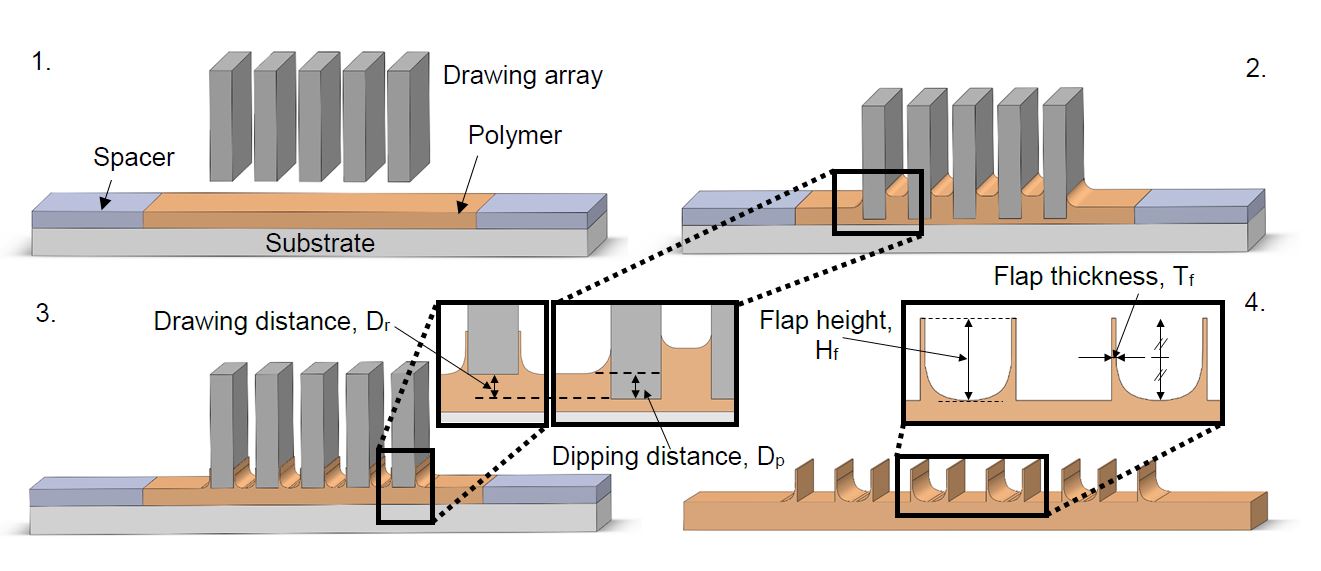This new method for manufacturing gecko-inspired adhesive materials could enable mass production and use of the versatile technology in industrial and residential environments. Georgia Tech’s bio-inspired gripper works without wet or pressure-sensitive adhesives, instead using a wall-shaped hierarchical dry adhesive microstructure that enables it to pick up and release different types of objects. The adhesion comes from elastomeric protrusions a few hundred microns in size that mimic the gripping ability of gecko feet.
Previously, the sheer-activated adhesives were manufactured using template-based molding, with the templates fabricated by complex and costly methods involving photolithography, laser micromachining, and ultraprecision cutting. Georgia Tech researchers have developed a novel drawing-based technique for manufacturing the soft elastomeric thin-film microstructures. The fabrication process can be controlled by such processing parameters as tool speed, time, and displacement during the dipping and drawing stages, making it suitable for mass production. The resulting adhesive microstructures perform better than those produced via conventional molding, and the gripping process does not require high-precision motion control, making it easier to operate in industrial environments.
- Effective: Assists in lifting/releasing objects when in a shear-activated/disactivated mode
- Versatile: Works with a wide variety of shapes, sizes, and materials
- Robust: Does not require high precision in controlling vise jaws, making it easy to implement in an industrial environment
- Scalable: Reduces manufacturing costs by orders of magnitude when compared with conventional molding techniques, enabling mass production
The innovation is useful for pick-and-place applications in numerous industries and environments:
- Food processing
- Packaging
- Semiconductor
- Electronic
- Biomedical
- Sports
- Household consumer
Temporary biological attachment systems have long intrigued scientists and engineers because animals that have these systems climb and walk on walls and ceilings, irrespective of their surface properties. Inspired by these systems, researchers have engineered dry adhesives involving contact elements based on thin films. However, current microstructure adhesives lack the necessary non-sticky default state, strong shear-induced attachment, and insensitivity to surface conditions. Adhesive development is further slowed by the complex and costly template-based molding methods used in the manufacturing process.
Georgia Tech has developed a cost-effective drawing-based technique for manufacturing shear-activated dry adhesives that has the potential to revolutionize this field.

Drawing-based manufacturing process and definitions of characteristic parameters. 1. Preparation of the drawing array and a polymer layer with uniform thickness 2. Dipping the drawing array into the polymer layer. 3. Drawing the tip out of the polymer layer. 4. Release of a cured structured surface.
